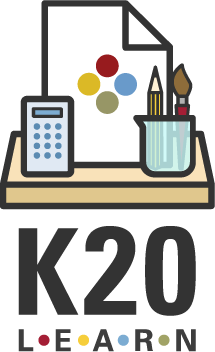Summary
Every city government works with its planning department when there are needs for new land acquisitions, zoning, designing parks, and new building construction. City planners use a host of tools and resources, like geometry, when working with their colleagues on city plans. This lesson looks at how and what city planners do while engaging students in tasks that build their essential knowledge of and skills in middle school geometry. Prerequisite knowledge is how to calculate surface area and volume. This lesson does not teach how to calculate those items - rather, this allows application of the concepts.
Essential Question(s)
In what ways can math knowledge be utilized to plan and enhance our communities?
Snapshots
Engage
Students engage with the work of city planning through a short introductory interview with a city planner in Oklahoma City.
Explore
Working in small groups, students explore geometric concepts through their choice of planning a new building or a new neighborhood.
Explain
Students share plans from their designs and clarify mathematical misconceptions about their work.
Extend
As a model of city planning work, students use their knowledge and understanding to create a proposal for their building or neighborhood using mathematical justifications and reasoning.
Evaluate
Students engage in a gallery walk where they present their plans and proposals.
Materials
Laptop, Chromebook, iPad, or other internet-capable device
trifold displays
cardboard or foam board
pencil
paper
tape or glue
Engage
Display the XX slide in the PP which has the prompt "I think City Planners do..." Tell students that they are going to brainstorm all of the things they think a City Planner could do.
As a modified Think-Pair-Share, once they're done with their individual list have them turn to a partner and compare their individual lists.
After they create a shared list, ask students to star all the tasks they think requires math.
Before you play the video, let students know that they'll hear from a city planner in OKC. As they watch, put a check mark by tasks they got correctly. When the video is over, give them a minute to revise their list to include things from the video.
Here is a Temporary Link for the video until it is finalized.
Explain to students that they are going to get to take on the role of a city planner and do some of the tasks they've thought of.
Explore
Put students in partners to complete the project together. Also offer construction paper, scissors, and rulers to help with their creative process.
The task is to design a neighborhood. Have students start on their planning handout brainstorming all the things they think should be in a perfect neighborhood, how much space it should take up, and where things should be so people could access them.
The task details are in the handout named INSERT NAMES HERE, and are written like an email as if they were really a city planner. The details of what is needed is technically in the handout, but if they need more guidance of what is expected there is an attached rubric.
If a pair chooses to build, distribute the Building Tasks Letter to the pair.
If a pair chooses to design, distribute the Design Tasks Letter to the pair.
To help with their planning process, there is a handout for them to organize their thinking. Pass this out to students and be ready to mingle around helping groups as needed to get their projects going.
This is intended to just be a planning session. Calculations and construction happens in the other parts of the lesson.
Explain
Have each pair join with another pair that completed a different task to form of groups of four.
Ask pairs to walk the other pair through their task and the calculations involved. Once students have shared their work, the other pair may ask clarifying questions.
Have students switch roles. The pair who was listening now shares their plan.
Extend
To extend this lesson, students are tasked with writing up a proposal.
To do this, each pair must use the calculations in their designs to pitch their design as the best option. Students will need to share their mathematical calculations in their proposal and use them as an argument for why their design is best. This should consist of around a half page of writing, depending on your students' writing level.
Students will need to create a display that outlines the main points of their proposal and that includes their design. This can be done using a trifold or with the assistance of Google Slides or Google Draw.
Optional: If you feel like students are showing interest in city planning and would like to know more about what post-secondary education they may need, please feel free to show this video.
Evaluate
Follow the following steps to have students do a Gallery Walk of plans and proposals:
Ask students to display their work from both their exploration and extension around the room. Students will need to set up their trifolds or display their work in Google Slides for their peers to click through.
Once their work is displayed, explain that they will be given four sticky notes on which they can write comments and questions.
After students receive sticky notes and their work is displayed, give students 10 to 15 minutes to freely move about the room to investigate their peers' designs and proposals. They need to use all of their sticky notes and place them near their peers' displays.
Once the Gallery Walk is completed, finish the lesson with a brief whole class discussion using the following prompts:
1. What did you learn about city planning that you didn't know before? What surprised you?
2. What will you take with you from this lesson?


